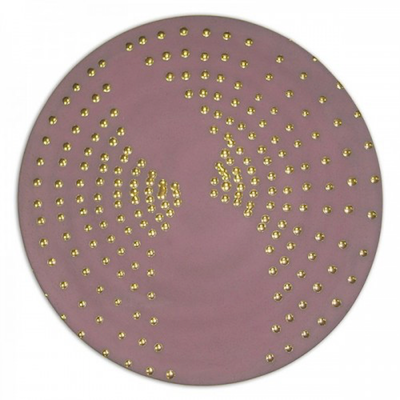


Details
Artist
Styles
// Abidjan by Bernard Aubertin is a mixed media painting that immerses the viewer in a monochromatic red palette, characteristic of Aubertin's exploration of color and texture. The surface is densely layered with a grid-like pattern of small, repetitive indentations and raised textures, creating a tactile, almost topographical effect. The uniform red tones amplify the sense of depth and intricacy, inviting close inspection to appreciate the subtle variations within the seemingly uniform color field. Aubertin, associated with the Zero movement, frequently used red as a symbol of energy and intensity, seeking to engage viewers through the physical presence and surface dynamics of his works. Abidjan exemplifies his interest in texture and the transformative potential of a single color.
Abidjan
form
Medium
Size
32 x 29 X 3 cm
- Inches
- Centimeters
Edition
Price
- USD
- EUR
- GBP
Details
Artist
Styles
// Abidjan by Bernard Aubertin is a mixed media painting that immerses the viewer in a monochromatic red palette, characteristic of Aubertin's exploration of color and texture. The surface is densely layered with a grid-like pattern of small, repetitive indentations and raised textures, creating a tactile, almost topographical effect. The uniform red tones amplify the sense of depth and intricacy, inviting close inspection to appreciate the subtle variations within the seemingly uniform color field. Aubertin, associated with the Zero movement, frequently used red as a symbol of energy and intensity, seeking to engage viewers through the physical presence and surface dynamics of his works. Abidjan exemplifies his interest in texture and the transformative potential of a single color.
- Recently Added
- Price (low-high )
- Price (high-low )
- Year (low-high )
- Year (high-low )
What is the Zero Movement?
ZERO was an art movement founded by Otto Piene and Heinz Mack, aiming to develop into a large international and cross-border movement. The name ZERO originated from a magazine founded by Heinz Mack in 1957, which became a platform for the group's ideas. The magazine was published for several years before ceasing in 1967. The ZERO movement sought to create a new beginning in art, emphasizing light, space, and movement, and became influential in post-war European art.
















